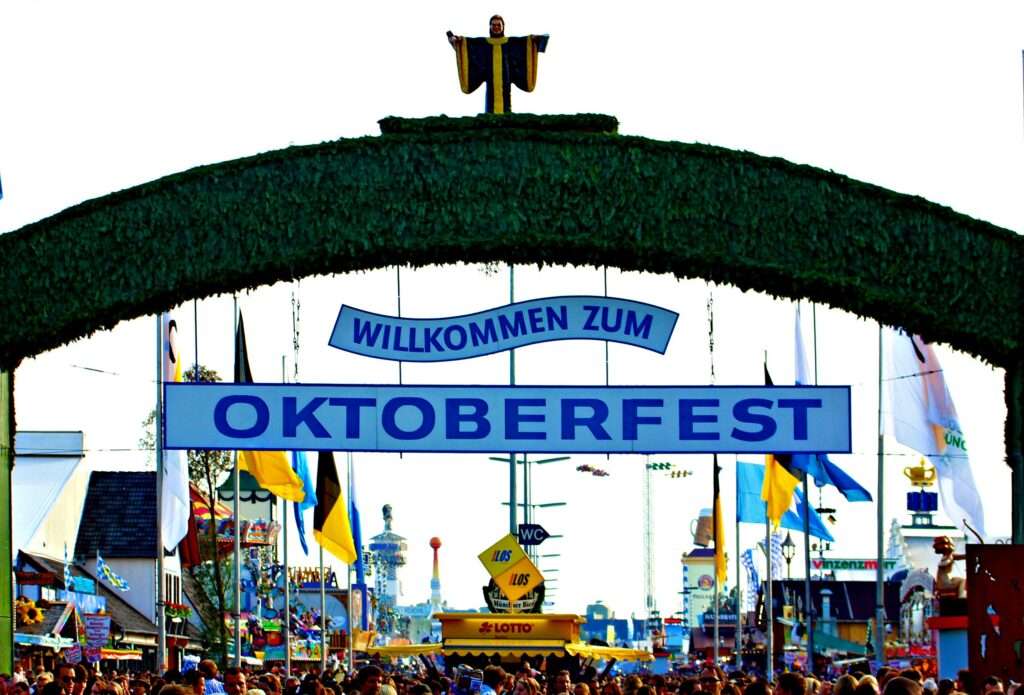Oktoberfest: A Historic Rabbit Hole We Went Down
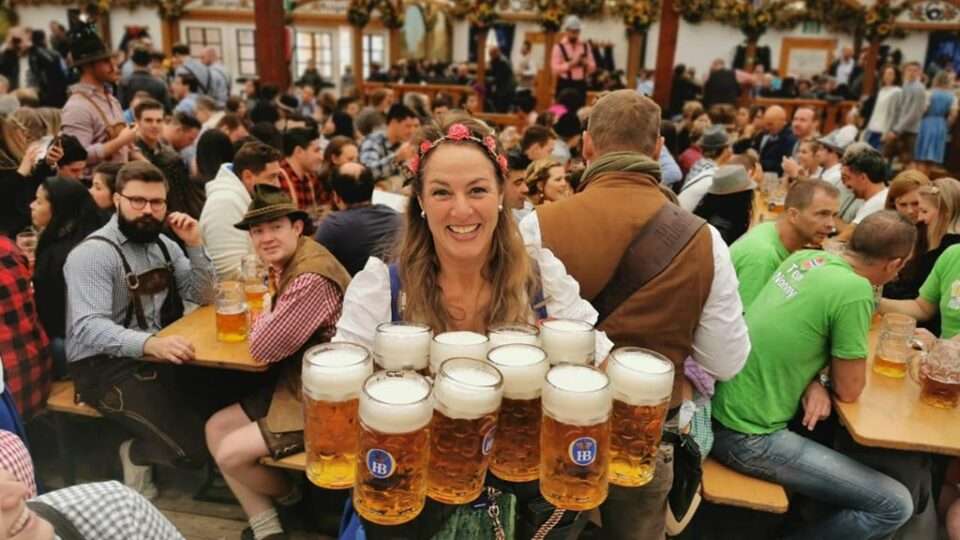
It’s the most wonderful time of the year – for beer drinkers! Happy Oktoberfest, everyone! To celebrate this fantastic holiday season we thought we would look back at the history of the festival and the beers poured at it.
The History of Oktoberfest
On October 12, 1810 (over 200 years ago!), the crown prince of Bavaria, who later became King Louis I, and Princess Therese von Sachsen-Hildburghausen were married. A week-long public celebration took place ending on October 17th with a prestigious horse race. These festivities marked the beginning of what we now call Oktoberfest.
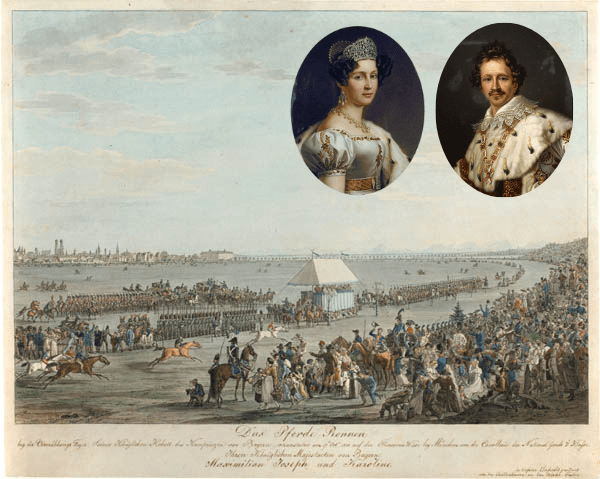
The celebration was so successful and well-loved that the Bavarian Agricultural Association (Landwirtschaftlicher Verein in Bayern) decided to recreate it a year later with a bit more focus on regional agricultural products. In 1813, the festival was cancelled due to the Napoleonic wars and it wasn’t fully revived until 1819 when the city of Munich made the event an economic priority. The festival brought in so many people, it was considered a significant source of annual revenue for the city and its residents. The 1819 fair was bustling with vendors, which included 12 beer suppliers, 1 wine grower, 2 coffee stalls, 3 liquor dealers, 4 pastry chefs, 6 cooks, a fruit dealer, some bakers, and a few vendors selling cheese, nuts, and radishes. The following year, the first indoor stalls were erected offering guests sheltered seating.
If you have ever been to Germany in October, you know that the days are short and can be cold and dreary. Needless to say, there were a lot of complaints about hosting this amazing festival in such conditions. So, in 1872 the celebration was officially moved into September (specifically starting the first Saturday after the 15th) with the last day being the first Sunday in October. In 1990, the rule changed slightly to the first Sunday in October or October 3rd (Germany Unity Day! Fall of the Berlin wall!), whichever comes later.
By the 1880s, the celebration had transformed more and more into a beer festival with the first characteristically large beer hall built in 1895.
Overall, the 19th century brought many ups and downs for the festival. War and disease inhibited the festival’s early successes, but the festival continued to push onwards with its spectacular options of traditional food stands, huge beer tents, and talented musicians and performers. By the end of the century, the festival included big attractions like carousels, increasingly exciting rides, and a parade (even electrical lighting to continue the party!).

Enter the 20th century. The World Wars and global economic crises put a significant damper on Oktoberfest but the festival was only fully cancelled several times and was occasionally run as a smaller Autumn fest. (It has only been canceled 25(ish) times since 1810 – pretty good all wars/disease/crises considered!) After World War II, there were two notable changes, 1) the Lord Mayor of Munich ceremoniously taps the first barrel of beer, and 2) the obligatory horse race was phased out, now only occurring to celebrate another 50 years of Oktoberfest (1960, 2010, etc).
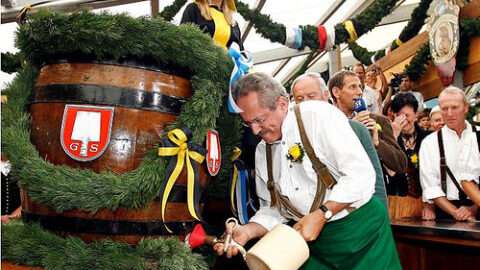
Fun Fact
The Lord Mayor exclaims “O’zapft is!” or “It’s tapped!” which is followed by 12 gunshots to signal the start of Oktoberfest – the official sign that beer can now be sold.
The opening ceremony takes place in the Schottenhamel Tent every year at noon on the first Saturday after September 15th.
The Oktoberfest we know today is the largest folk festival in the world, drawing around 6 million visitors each year!! In 1910, for the 100th anniversary, an estimated 1.2 million liters of beer were consumed. In 2014, the record was set at 7.7 million liters. (https://www.statista.com/statistics/561032/poured-amount-beer-oktoberfest-munich/) For our non-metric readership, that’s over 2 million gallons, or more than 3 Olympic-sized swimming pools, or 21.7 million pumpkin spice lattes but less than 10% of the volume in the Trevi fountain.
The Evolution of the Oktoberfest Beer
Rule number one for the beer at Oktoberfest: only beer brewed within the Munich city limits can be served. Today, that is limited even further to the six biggest and oldest breweries: Augustiner, Löwenbräu, Hacker-Pschorr, Hofbräu, Paulaner, and Spaten.
Before we get there, though, let’s start way back before the first Oktoberfest, in the 15th century, to understand what beer was like when it was a part of everyday nutrition and life. There are records in Munich as early as 1420 mentioning top-fermenting (ale) yeast. While we often assume that people at the time didn’t understand microbiology and its contribution to beer, it is clear that the Bavarians were aware of the practical difference between top and bottom fermentations. It was not uncommon for regulations to be put in place on the type of yeast used, how long it was to be fermented, and how quickly it must be served.
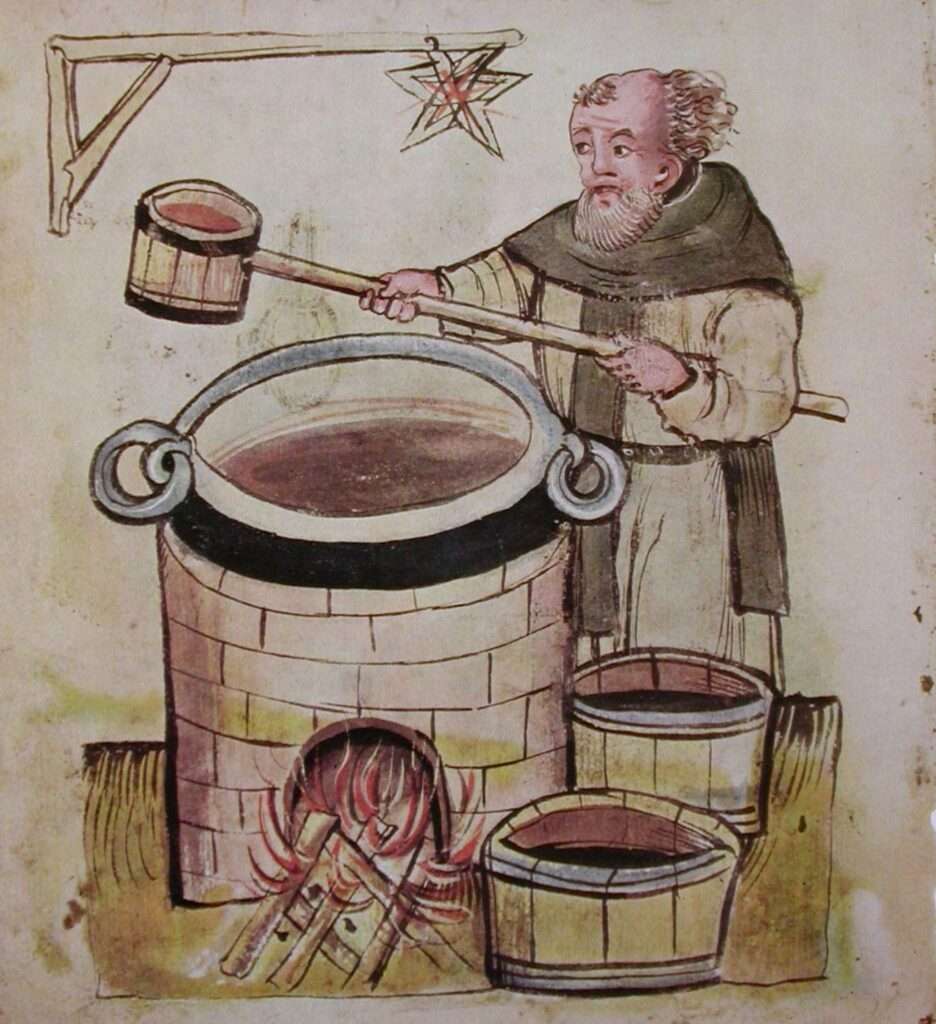
Fun Fact
The surname Hefener directly translates to Yeaster. It was the Hefener’s job to collect the zeug (“stuff”) left in the tank after fermentation and, if it was a good batch of beer, save the zeug for the next fermentation.
In 1516, the famous Reinheitsgebot was written into law stating, “the only ingredients used for the brewing of beer must be barley, hops and water.” By specifying barley and not malt, the Bavarian law was understandably saving wheat for baking instead of brewing. The distinction was important as much of the population relied on beer and bread for nutrition. Allowing brewers to use wheat would limit its availability to bakers and cause an imbalance in food availability. The law also indirectly pushed brewers to using bottom-fermenting yeast (Lager Yeast!), as barley beers were typically made with bottom-fermenters and stored in cellars.
An early version of today’s Dunkel, Braunbier (brown beer) – produced with a wide variation of alcohol content, sweetness, bitterness, and smokiness depending on the brewer – was the standard drink in Bavaria. By 1553, it was well known that beer tasted better when it was brewed in the cold months and fermented and stored at lower temperatures. Thus, a law was instituted that the brewing season would be limited to September 29th (St. Michael’s Day) to April 23rd (St. George’s Day). This created winterbiers and sommerbiers – both braunbiers, but with different production and consumption times.
Winterbiers were brewed and drunk in the same season. Sommerbiers were brewed at the end of winter and aged in large wooden barrels to be imbibed between May and October. Due to the longer aging period, sommerbiers ended up being stronger in alcohol, drier, and more heavily hopped than winterbiers. This made sommerbiers more expensive – and subjectively tastier. (This will be important information to remember in a couple of paragraphs.)
Fun Fact
The summer brewing prohibition was lifted in 1850 because of the use of ice to cool cellars. From the 1870s onward, artificial refrigeration removed the need for ice altogether.
So, fast forward to 1810, we have the wedding of the crown prince of Bavaria, Oktoberfest becomes an annual celebration and who can have a two week-long celebration without beer? By the late 1800’s, the festival is getting more and more beer focused. The Wirtsbudenring – a ring of 18-20 beer stalls run by local taverns – is a popular festival destination for locals and tourists to drink Munich braunbiers.

In 1872, a new type of beer was introduced to the festival: Märzen. It was an especially hot summer and guests were drinking more than usual. The Schottenhamel stand (which still exists today) ran out of regular lager and turned to the Franziskaner-Leist Bräuerie (today a part of Spaten Bräuerie) for help. The owner, Joseph Sedlymayer, offered him a new lager, a sommerbier “brewed in the Viennese style” which was paler in color and drier than the darker, full-bodied Munich lagers.
The beer, brewed in March, was intended to be a celebratory beer for the end of summer, which meant it came with a much more expensive price tag at 12 kreuzers a mug instead of 9 kreuzers. (Quiz time: why were sommerbiers so much more expensive? Hint: I told you it would be important to remember.) That didn’t seem to stop anyone as guests paid the money and reveled at the refreshingly lighter new brew.
Oktoberfest-Märzenbier became the most popular beer style served at the festival until the 1950s when something else came along… but we’ll get there.
In 1895, Thomasbräuerei (now closed) built the first Bierburg (beer castle) which had a hall large enough for 800 people. Schottenhamel followed suite the following year. In 1907, the ring of stalls was no more and a street of castles stood in its place. In 1910, Pschorr Bräuerei built a castle big enough for 12,000 people. Today, the Wirtsbudenstraße is 1 Km long and has 14 big tents ranging from 3,000 – 10,000 seats each. Each tent only pours one type of beer, in liters, brewed specifically for the festival by one of the big 6 Munich breweries.
1953 brought the second big change in the Oktoberfest beer scene. Märzen, the festival favorite for 80 years, was challenged by Augustiner’s introduced of its Wiesnedelstoff, a lighter-colored, lighter-mouthfeel lager. It set a new standard for Oktoberfest beers which today resemble a slightly stronger Munich Helles and are known as Wiesn, Festbier, or just straight up Oktoberfest. Today, each of the big 6 features their Oktoberfest at the 14 big tents. For some, that is the only place you can get it!
700 Years in the Making: the histories of the Big Six
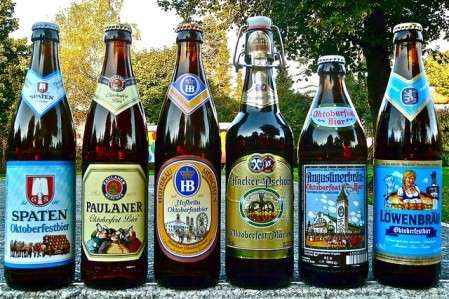
As previously mentioned, Augustiner, Löwenbräu, Hacker-Pschorr, Hofbräu, Paulaner, and Spaten are the only breweries allowed to produce beer for Oktoberfest. The beer is poured in the 14 large tents and at numerous small and medium tents and stands. Fun fact: other than Hofbräu, the tents are owned by individual hosts and not by the breweries themselves.
In researching the Big Six, I may have gone down a rabbit hole investigating their ownerships and histories. I leave the following for your perusal…
1328 – Monks of the Augustinian Order found a brewery.
1397 – Hans Welser starts “Welser Prew”, which will eventually become Spaten Brewery.
1417 – First mention of the Hacker Brewery.
1524 – First mention of a beer brewer at Löwengruße, 17, Munich (Löwenbräu)
1572 – What will become the Spaten Brewery is shown on a city model of Munich.
1589 – Hofbräu was founded under Duke Wilhelm V as a ducal brewery with Heimeran Pongratz, a Benedictine monk from Geisenfeld, as the first brewmaster.
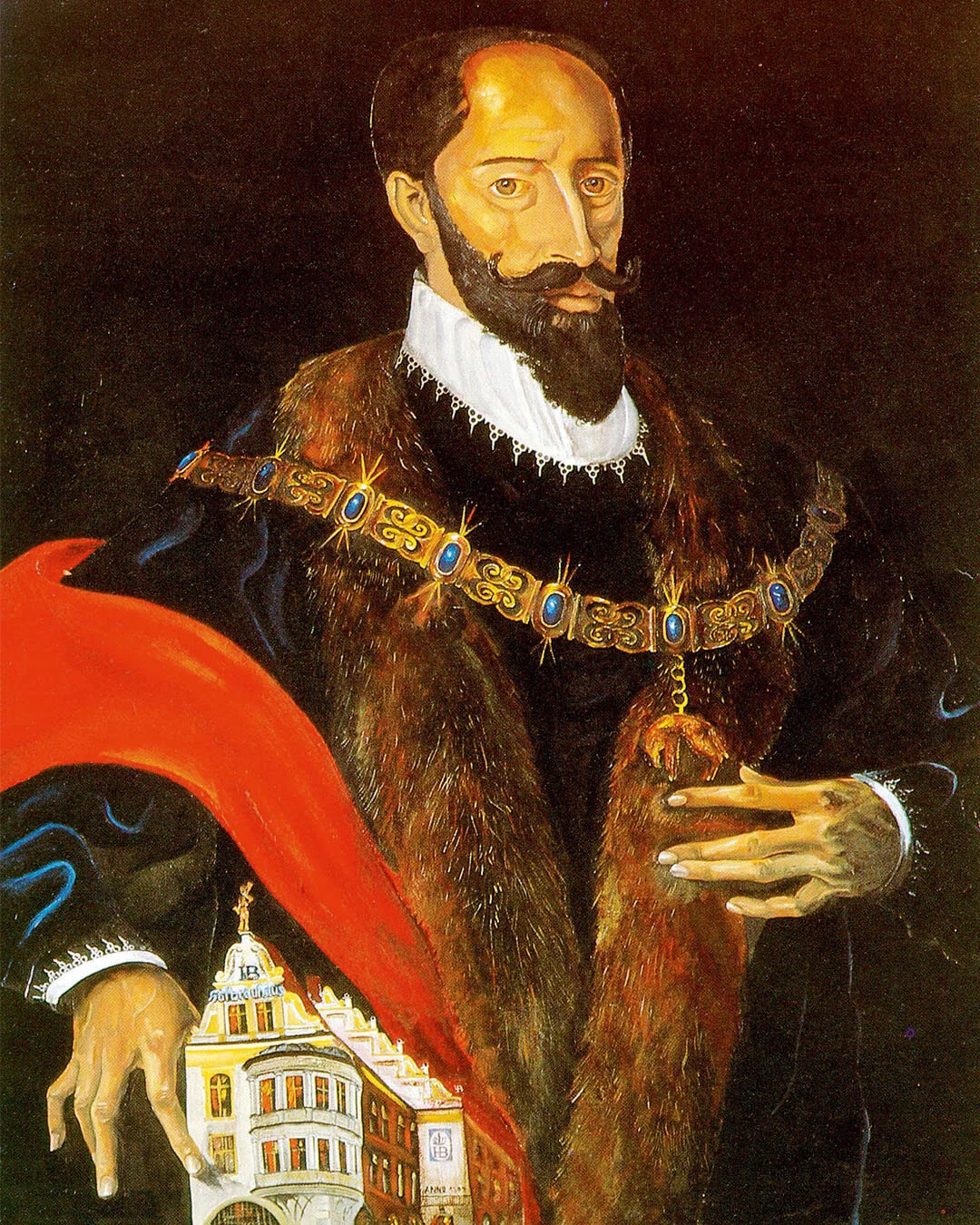
1602 – Duke Maximilian I, son of Wilhelm V, secures the wheat beer monopoly for Hofbräu.
1610 – Hofbräu is allowed to be purchased by innkeepers and served publicly for the first time.
1632 – 344 buckets of Hofbräu Maibock were traded with the King of Sweden to prevent the pillaging and plundering of Munich during the Thirty Years’ War.
1634 – First recorded mention of the monks in the Neudeck ob der Au Monastery brewing a strong beer, the Paulaner Salvator.
1704(ish) – Spaten Brewery is given its current name.
1746/7 – Löwenbräu first appears in a beer brew directory in Munich.
1773 – Brother Barnabas (aka Valentin Stephan Still) arrives at the Neudeck ob der Au Monastery. His recipe still forms the basis for today’s Paulaner Salvator.
1793 – Joseph Pschorr (a brewer at Hacker Brewery) marries the daughter of the brew master and eventually inherits his father-in-law’s house and brewery.
1803 – The Augustiner monastery was dissolved during secularization but the brewery continued under state management.
1806 – The Kingdom of Bavaria is formed with Maximilian I Joseph as king. Hofbräu changes from a Ducal brewery to a Royal brewery.
Franz Xaver Zacherl assumes control of the Paulaner Brewery from the monks after secularization. Paulaner is often called “Zacherlbrew” in the common vernacular.
1807 – The royal court brewer, Gabriel Sedlmayr the Elder, acquires Spaten Brewery. It was the smallest brewery in Munich at the time.
1810 – King Maximilian I Joseph’s son, Crown Prince Ludwig, marries Princess Therese von Sachsen-Hildburghausen. (WOOT!)
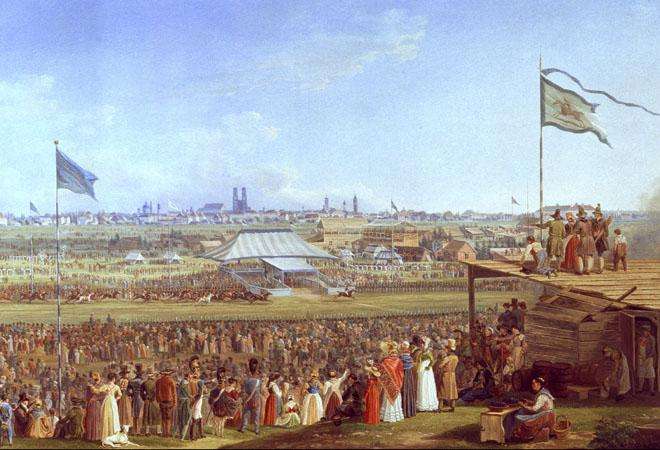
1812 – Hofbräu releases a beer specifically for Oktoberfest.
1818 – The first dedicated beer tents appear at Oktoberfest.
Georg Brey buys Löwenbräu.
1820 – Joseph Pschorr purchases Bauernhansl Brewery to build the Pschorr Brewery.
1829 – Anton and Therese Wagner acquire Augusinter and it remains a family-owned brewery to this day.
1839 – Spaten’s Gabriel Sedlmayer the Elder dies. His sons, Gabriel and Joseph, take over.
1841 – Georg Pschorr Sr. and Matthias Pschorr Sr., sons of Joseph Pschorr, take over Pschorr Brewery and Hacker Brewery, respectively.
August Deiglmayr, son-in-law of Gabriel Sedlmayer the Elder (Spaten Brewery), buys Franziskaner Brewery (aka Residenzstraße Brewery).
1842 – Joseph Sedlmayer leaves Spaten as partner and buys Leistbäuerei (which was likely founded in the 15th century).
1852 – Hofbräu becomes the property of the State of Bavaria.
1858 – Joseph Sedlmayer joins his brother-in-law, August Deiglmayr, in operating Franziskaner Brewery.
1861 – Joseph Sedlmayer acquires the company shares of August Deiglmayr in Franziskaner Brewery.
1863/4 – Löwenbräu is the largest brewery in Munich and is responsible for 1/4th of Munich’s total beer output.
1864 – Georg Pschorr Jr. assumes ownership and management of Pschorr Brewery.
1865 – Leistbäuerei stops operations and the brand is solely produced by Franziskaner Brewery.
1867 – First mention of Augustiner having a beer stand at Oktoberfest, but it is presumed that the beer was served in stalls long before then.
Spaten is the largest brewery in Munich, a title it holds until the 1890s. They were also the only German brewery to receive a gold medal for its beer at the World Exhibition in Paris.
1867 – Michael Shottenhamel founds the Schottenhamel Tent at Oktoberfest. The tent is now into the 5th generation of family ownership and claims to be the oldest and most traditional beer tent.
(photo circa 1898)
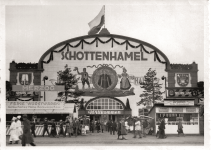
1872 – Löwenbräu is converted into a stock corporation.
Franziskaner-Leist Bräuerei Märzen was first served at Oktoberfest due to a supply shortage of normal beers.
1874 – Gabriel Sedlmayer hands over control of Spaten Brewery to his children, Johann, Carl, and Anton Sedlmayr.
1886 – The first canvas tents appear at Oktoberfest.
1900 – Löwenbräu receives Grand Prix for its beer at the Paris World Exhibition.
1903 – Augustiner has the largest beer castle at Oktoberfest with room for 3,000 guests.
1909 – Joseph Sedlmayer’s son, Gabriel Sedlmayr III, turns the Franziskaner-Leist Brewery into a family-owned joint stock company, the ‘Joseph Sedlymayr Sum Franziskanerkeller (Leistbräu) AG”.
1921 – The “Unionsbrauerei Schülein & Cie” merges with Löwenbräu. Herrmann Schülein becomes general director.
1922 – Spaten and Franziskaner-Leist-Bräu merge to form a stock corporation, the “Gabriel and Joseph Sedlmayr Spaten-Franziskaner-Leistbräu AG” in order to combat the economic problems of the crisis-ridden postwar years and to capitalize on synergies. A contract for a community of interests was concluded with the Löwenbrauerei.
1928 – Löwenbräu is the first Munich brewery to produce more than 1 million hL in a year.
1939 – “Royal” is removed from Hofbräu’s title and it is changed to the “National Hofbräuhaus”.
1950 – Löwenbräu installs a mechanical roaring lion above its tent at Oktoberfest. (The roaring was banned in 1952 and 1953.)
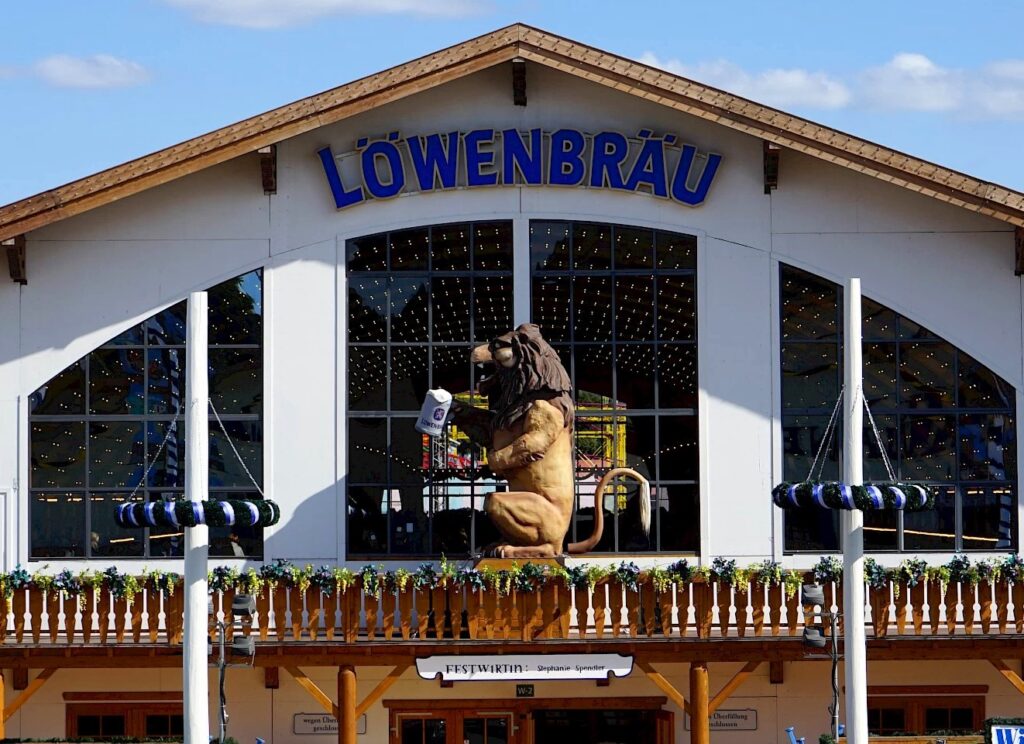
1952 – Hofbräu has its own tent at Oktoberfest.
1953 – Augustiner introduces Wiesn-Edelstoff (Oktoberfest beer) as a replacement to Märzen.
1964 – Spaten-Franziskaner-Leistbräu’s wheat beer premiers at Oktoberfest.
1972 – Hacker Brewery and Pschorr Brewery are merged into Hacker-Pschorr Bräu Aktiengesellschaft.
Hofbräu builds (and maintains) the largest Oktoberfest tent, with room for 10,000 people.
1979 – Josef Schörghuber assumes majority shareholding of Hacker-Pschorr AF. The Schörghuber family also takes over majority share of the Paulaner Brewery.
1987 – Augustiner is the only Oktoberfest brewery to still serve out of Hirschen (200 L wooden barrels). And still does so to this day!
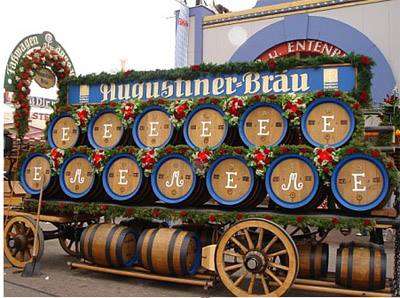
1997 – Spaten celebrates its 600th anniversary. Löwenbräu merges with Spaten.
2003 – Interbrew buys the Spaten-Franziskaner-Löwenbräu Group.
2004 – Interbrew merged with AmBev to form InBev.
2008 – InBev merged with Anheuser-Busch to form Anheuser-Busch InBev (abbreviated AB InBev).
2010 – The 200th Oktoberfest!
Paulaner introduces a new festival tent with the first centralized beer supply fed through an underground loop pipeline.
